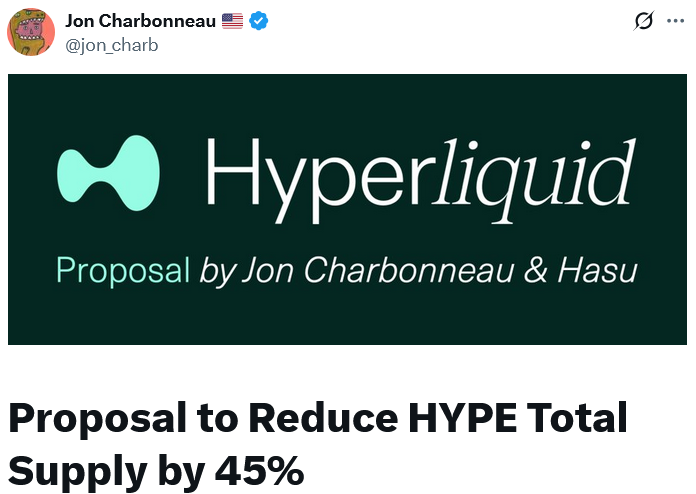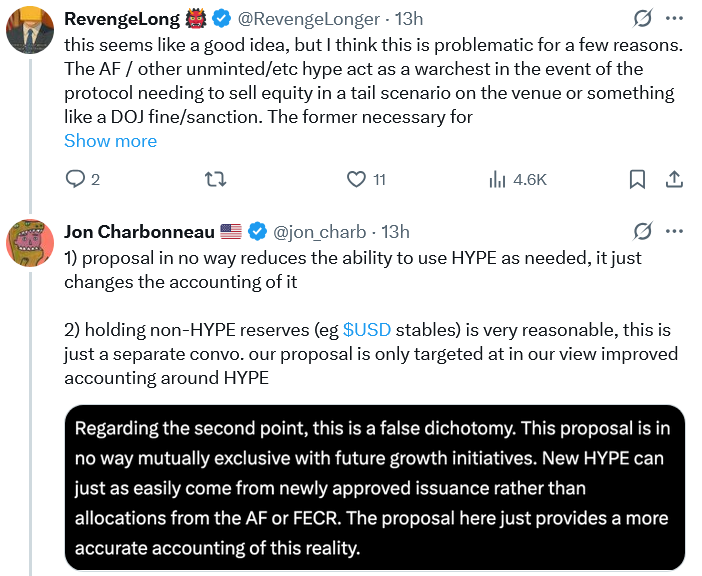The HYPE token supply cut proposal would revoke 421 million future-emission HYPE and burn 21 million from the Assistance Fund, reducing total HYPE supply by ~45% to improve token valuation and staking incentives for Hyperliquid investors and governance.
-
Proposal cuts ~45% of HYPE supply to improve token valuation
-
Revokes future emissions/community rewards and burns Assistance Fund HYPE
-
Targets 421M HYPE from FECR and 21M HYPE from AF; aims to preserve issuance ability
HYPE token supply cut: 45% reduction proposed to improve valuation and staking appeal — read details and vote implications on Hyperliquid governance.
DBA Asset Management has proposed slashing HYPE’s future emissions and burning Assistance Fund tokens, cutting total HYPE supply by 45% to address fully diluted valuation distortions and boost investor confidence.
What is the HYPE token supply cut proposal?
The HYPE token supply cut proposal seeks to revoke authorization for unminted HYPE allocated to future emissions and community rewards (FECR), burn HYPE held in Hyperliquid’s Assistance Fund (AF), and remove the 1 billion supply cap. The plan aims to reduce total HYPE supply by about 45% to make HYPE easier to value.
How would the proposal change Hyperliquid’s tokenomics?
The proposal would: (1) rescind issuance rights for 421 million HYPE assigned to FECR; (2) burn 21 million HYPE from the Assistance Fund; and (3) eliminate the 1 billion cap to allow controlled future issuance if governance approves.
DBA Asset Management investment manager Jon Charbonneau authored the proposal on X, co-signed by researcher Hasu. DBA is a material HYPE holder and active staker, so its vote would carry weight in governance.

Source: Jon Charbonneau
Why does DBA say this change is needed?
Charbonneau argues the market undervalues Hyperliquid because fully diluted valuation (FDV) includes unissued tokens, which penalizes the protocol’s price discovery. Removing large pre-allocated pools reduces FDV distortion and may attract investors and stakers by making per-token value clearer.
What are the community and institutional reactions?
Institutional voices such as Dragonfly’s Haseeb Qureshi supported curbing the nearly 50% community allocation, calling it an “amorphous slush fund” that should be restructured. Critics, including crypto commentator Mister Todd, warned that removing future emissions could impair growth incentives.
Some analysts caution keeping reserves for sanctions or fines, but DBA says accounting changes retain emergency resources through alternative mechanisms rather than leaving the protocol exposed.
How big are the numbers involved?
| Metric | Current | Proposed Change |
|---|---|---|
| FECR allocation | 421 million HYPE | Revoked (421M removed) |
| Assistance Fund (AF) | 21 million HYPE | Burned (21M removed) |
| Net supply change | — | ~45% reduction in total supply |
How could USDH affect Hyperliquid revenue?
Hyperliquid’s new USDH stablecoin is expected to drive fee revenue as it rolls out. Charbonneau noted USDH will contribute materially to platform revenue, which could offset reduced emission-driven incentives by improving native revenue streams.
Frequently Asked Questions
Will the HYPE supply cut remove the protocol’s ability to fund future initiatives?
No. The proposal revokes current authorizations for unminted tokens but removes the hard cap to allow governance to approve targeted future issuances when needed. This preserves funding flexibility while eliminating pre-allocated excess.
Does burning Assistance Fund HYPE reduce protection against sanctions?
DBA states the accounting change does not leave Hyperliquid defenseless; it reallocates how reserves are held and relies on governance-approved mechanisms to maintain contingency funds.
How will the vote proceed in Hyperliquid governance?
The proposal must pass through Hyperliquid’s governance process, where token-weighted voting determines outcomes. Major stakers like DBA would be influential but not solely determinative.
Other institutional views and criticism
Dragonfly’s Haseeb Qureshi publicly supported limiting large community allocations, arguing near-50% allocations create governance ambiguity. Conversely, critics warned that cutting emissions removes an effective growth lever.
In related ecosystem updates, Hyperliquid recently launched USDH and opened a vote to select its issuer. The vote drew interest from multiple issuers; Native Markets won the issuer role last week. Industry commentary also noted a recent large withdrawal and sales activity from major holders, including an Arthur Hayes-led fund.

Source: Jon Charbonneau
When did HYPE price react to the news?
HYPE hit an all-time high of $59.30 before retracing more than 22% to $46.08 amid profit-taking and reports of large holder sell-offs. Market participants cited upcoming token unlocks as a factor in selling pressure.
Key Takeaways
- Supply cut scope: Revokes 421M FECR and burns 21M AF HYPE, ~45% supply reduction.
- Governance impact: Proposal must pass token-weighted governance; major stakers like DBA are influential.
- Revenue vs. emissions: USDH fees may offset reduced emission incentives, shifting growth levers to revenue generation.
Conclusion
The HYPE token supply cut proposal aims to correct FDV-driven misvaluation by removing large pre-allocations and burning Assistance Fund tokens while preserving governance-controlled issuance. The plan balances cleaner tokenomics with flexibility, but final outcomes will depend on a governance vote and community consensus. Track the proposal in Hyperliquid governance to see how stakeholders vote.






